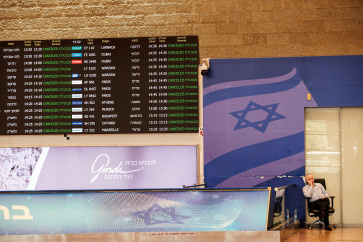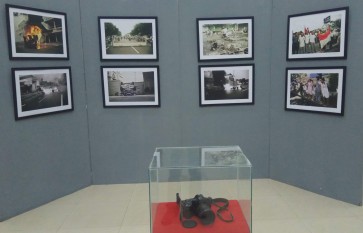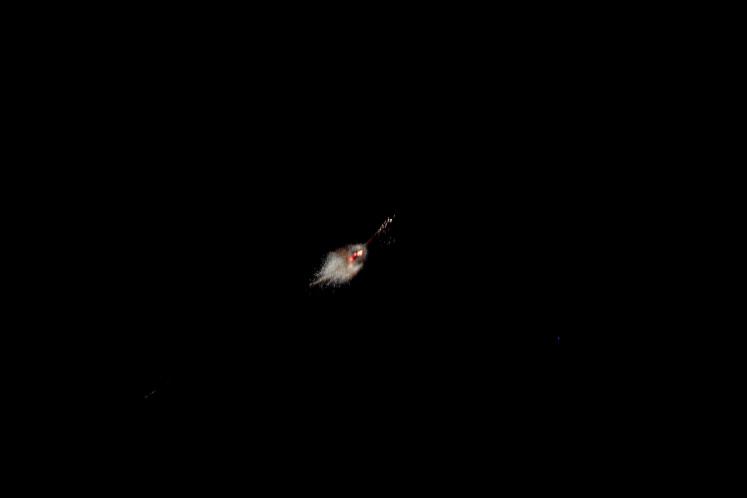Popular Reads
Top Results
Can't find what you're looking for?
View all search resultsPopular Reads
Top Results
Can't find what you're looking for?
View all search resultsImmortal images of Sanur
Mangrove Temple in Sanur, a painting on canvas by Paul Husner
Change text size
Gift Premium Articles
to Anyone

M
span class="caption" style="width: 398px;">Mangrove Temple in Sanur, a painting on canvas by Paul Husner.Poet Warih Wisatsana filled the art space with evocative words, as he recited A Birthday Poem for Paul Husner on the opening night of Husner’s “Enlightening Bali Light” exhibition.
“Not in Sanur only, a tale wish to be immortal, Husner,” Wisatsana said to the scores of art enthusiasts, including Husner, gathered at the Agung Rai Museum of Art (ARMA) that Thursday night.
The first secretary of the Ambassador of Switzerland to Indonesia, Georg Stein, opened the exhibition that will run until July 9.
A book titled Paul Husner: Painting of Bali, Sanur and Beyond—Seaside Encounters Between Nature and Men penned by leading art critic Jean Couteau was also launched during the opening.
The exhibition and book launch marked the celebration of ARMA’s 15th anniversary.
“This museum was first opened on June 9, 1996. It houses a collection of fine art works created by Balinese traditional painters, Indonesian contemporary painters and foreign painters who reside in, are inspired by and work in Bali. We have several paintings by Paul Husner in our collection,” the owner of the spacious ARMA, Agung Rai said.
Agung Rai and Husner go back a long way. As early as 1996, they would often meet over a cup, well many cups actually, of coffee spiced up with discussions on the latest development in the realm of fine art.
At one point, Husner showed Rai the photographs of his works on display in Jakarta.
“I browsed over the photographs and realized he was indeed a great artist. At that time I told him he should move to Bali and stay in this island, to immerse himself in the seen and unseen beauty of this great culture,” Rai recalled.
Husner followed his friend’s advice, regularly visited Bali and stayed for long periods during each visit. Sanur and Ubud were Husner’s favorite haunts.
Husner and his anthropologist wife Tine G. Ruiter regularly attended local religious rituals, traditional arts performances, and almost every art-related activity in the island.
Such immersion enabled Husner to understand the culture of his adopted island and draw inspiration from all these events.
The works currently on display at ARMA narrate humans’ interaction with elements of Nature, such as the mountains, seas and big trees. These elements are the physical representations of several traditional philosophical treatises of the Balinese. For instance, the treatise on Nye-gara-Gunung, which literally means Ocean-Mountain, endows oceans and mountains with a special status in Balinese Hinduism’s sacred cosmology. Husner obviously understands the philosophical teachings that underlie the ways the Balinese see themselves and their roles in this universe.
Husner created a considerable number of works dealing with Hindu temples. Understandably, the works depict temple rituals, decorated shrines, sacred trees or various scary-looking statues erected inside the temple.
His works dealing with temple sights and landscapes include Lion Statues in Pengembak Temple, Dragons and Crocodiles at Pengembak Temple, Bridges to Mangrove Temple, Mangrove Temple in Sanur, and Offering at Le Mayeur’s Museum.
Husner also explores the daily life of a group of people who rely on Sanur beach for their livelihood, from the fishermen, fresh fish traders, grilled corn vendors, to restaurants owners. Mesmerized by Sanur’s calm beach and quiet ambiance, Husner has immortalized through his works this small fishing village that has turned into a major tourism spot.









